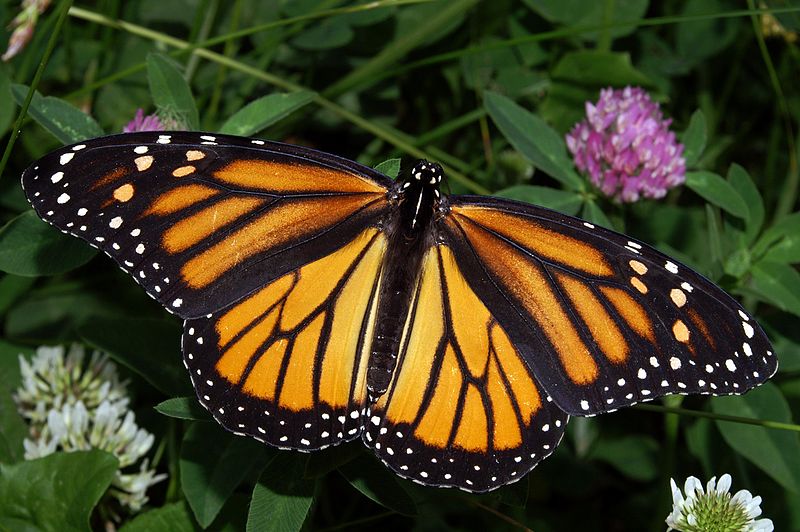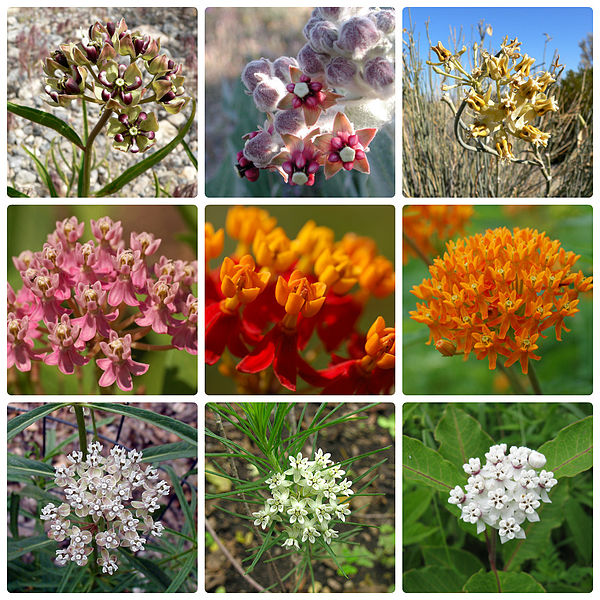If you farm in the Midwest, you may be able to help monarch butterflies next year and get paid in the process.

Photo by Kenneth Dwain Harrelson via Wikimedia Commons
Monarchs make their way to the United States in the summertime, and in recent years, these ecologically important (and oh-so-pretty) pollinators are having trouble surviving the season due to a lack of food.
Seems strange, especially during the summer months, when green things abound, but one of the monarchs’ main food sources is the native flowering milkweed plant, and it is rapidly disappearing in the wake of herbicides.

Photo collage by Pixeltoo via Wikimedia Commons
The USDA Natural Resources Conservation Service is taking action to target milkweed restoration and management on private farms and ranches in 10 states that provide critical habitat for monarchs (Illinois, Indiana, Iowa, Kansas, Minnesota, Missouri, Ohio, Oklahoma, Texas, and Wisconsin).
“We’re focusing efforts in the southern Great Plains and Midwest—two regions at the heart of the monarch’s migration,” announced the USDA last month. “In the southern Great Plains, our work will focus on rangelands and ways to improve the health of pastures so they provide good forage for livestock and food for monarchs. In the Midwest, we’re focusing on integrating plantings into croplands and making improvements to wetland areas.”
As with its other cost-share programs, the NRCS will offer financial assistance, incentives, and technical guidance to landowners whose property meets the specifications for monarch habitat establishment and/or improvement. The agency’s goal is to partner with farmers and ranchers “to voluntarily establish habitat for the monarch on working lands while ensuring America’s farms and ranches stay productive.”
Pollinators, as we know, are a vital factor in that equation.
If you’d like to get a jump on establishing healthy monarch habitat this spring, get in touch with your local USDA service center for details.





















































This past summer I collected 125 Monarch larva put them in 2 large aquariums and kept plenty of milkweed in them, they all hatched, I have 2 butterfly bushes in my flower garden and I gently put the hatched butterflies on them and they get their “wings” I’ve been doing this for twenty years or so. I involved my 3 year grandson this year. He enjoyed it. I love butterflies.
My Christina, how wonderful of you ! I am so impressed as you did the whole cycle right in your home and then released them. We have very few monarchs around my farmette. I even planted a whole stand of milkweed for them- sigh
This past Summer and Fall, we had an abundance of Monarch butterflies around here in Florida. Milkweed grows easily everywhere and they are happy campers. It is fun to see a big cluster of them feeding away.
We had about 30 milkweed for monarchs this summer. I’m trying to do my small part too. Christina, that is really awesome what you did. You go girl!
Christina, I am really impressed! We have milkweed growing in the ditches here. Our own ditches are no spray. I have also planted Joe Pye the past two years. Love the color and so do the Monarchs. Munch, munch. Where do you collect your larva from”
Pingback: Molly Moo-cow | Raising Jane Journal
Pingback: Marvelous Monarchs | Raising Jane Journal
Our local Master Gardener Club is endeavoring to inform our community of the plight of the Monarch. At the local farmer’s market, in early summer, we have a sale of various milkweed plants and encourage growing of other nectar/feeding plants well as provide plight and growing information for adults and children. Another good source of information is the Monarch Watch where you can learn what to plant to attract pollinators as well as Monarchs. Once a plot/habitat is established, for a monetary fee, you can purchase a “Way Station” sign to let other’s know of your effort.